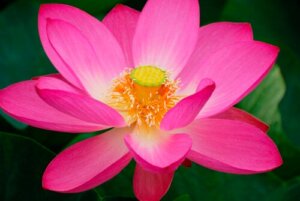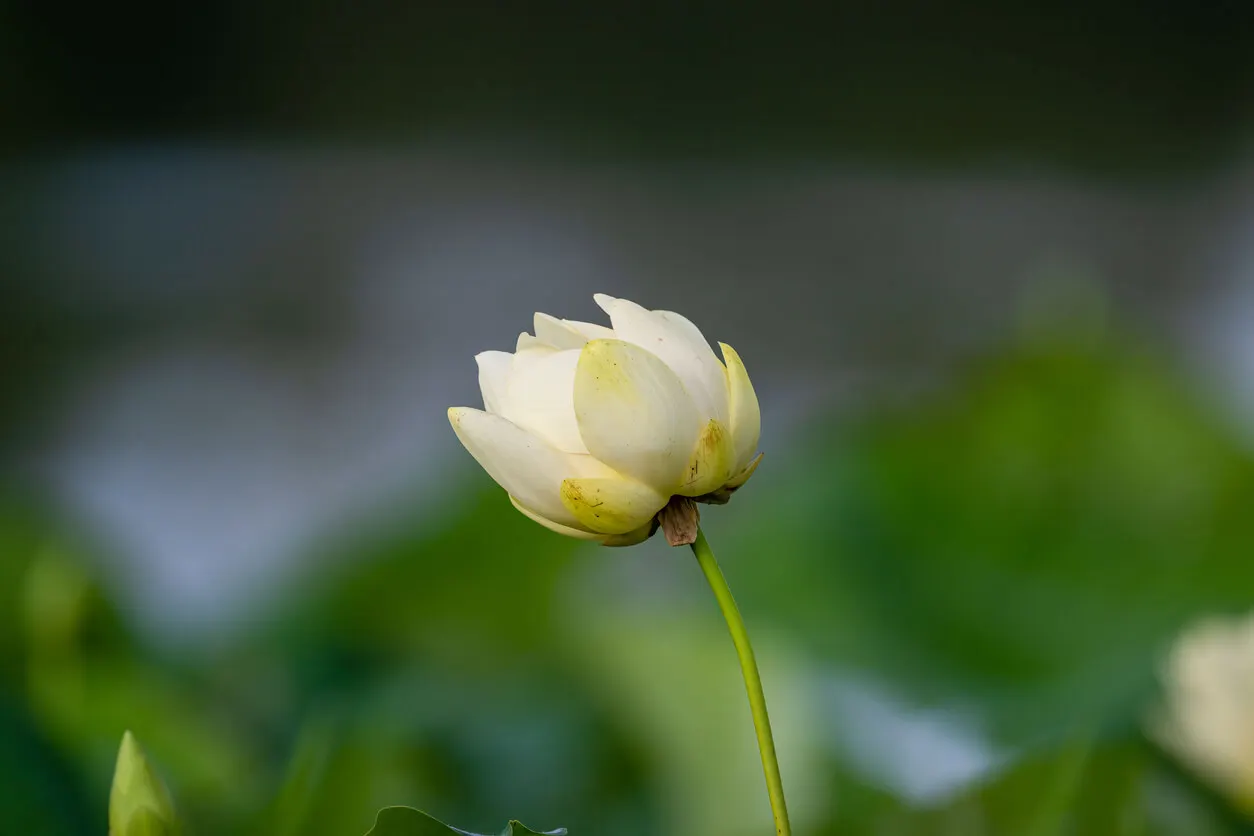How to Grow a Lotus Flower in a Fish Tank


Reviewed and approved by the nurse Leidy Mora Molina
To germinate the lotus flower at home is not a great challenge. This plant belonging to the Nelumbonaceae family stands out for its strength to stand up in hostile terrain, so taking care of it in a fish tank, with all the attention it deserves, is a light task.
The beauty of its flowers gives meaning to the meaning given to it in different cultures and religions, such as Hinduism and Buddhism, respectively. In general, people associate it with light, purity and revival. The symbolism varies according to the color of the petals; what is invariable is the interest of houseplant lovers to have at least one of these specimens at home.
How to grow the flower? What does it need to survive in a fish tank? All this and more we will reveal during the reading.
Attributes of the lotus flower, a plant that can germinate at home
The Virtual Health Library indicates that the common name lotus is used to refer to other plants, such as the water lily, due to the resemblance between the two. In fact, the derivative of the genus Nelumbonaceae is considered to be a type of water lily.
It grows in swamps, ponds and lagoons, which is understood as the natural strength of the species to rise in the midst of adversity. This reflection is one of the attributes given to the plant, characterized by long stems, leaves of various shapes and flowers in a wide range of colors. All these attributes are valid for the symbolism given to it.
For example, the white lotus flower is synonymous with purity and spiritual perfection; the blue one has to do with knowledge; the pink ones represent divinity; and the red ones have to do with love.
There are 2 types of Nelumbo: the nucifera or Asian and the lutea or American. All can germinate with minimal care, without much experience in gardening matters.

How to grow the lotus flower at home
The Nelumbonaceae grows without distinction in ponds and blooms in late spring. It does not require watering, but it would be good to give it some warm water, especially during the winter, because this prevents overcooling of the growing water.
To germinate your specimen at home, follow these steps:
- Soak the seeds: soak them in warm water for several days until germination begins. It is important that the water is not chlorinated and that you replace it daily. The process goes well if you notice that the seeds double in size from the first watering.
- Transfer to a suitable container: after about 15 centimeters, move the plant to a container where it has adequate space for its development, both in height and width.
- Add soil: add at least 20 centimeters of soil in the container and sow the germinated seeds, pressing the surface layer lightly.
- Put in the pond: finally, have a shallow pond ready and at a temperature of 21 °C, in which you will insert the container to progress the growth. After securely attaching the stem, you can move the entire piece to a fish tank, without a pot.
You can also grow a lotus flower from a rhizome. Many garden stores carry them and, just as with seeds, you must soak it until it begins to germinate.
Care lotus flower needs in a fish tank
If you move the germinated lotus flower to a fish tank, the rhizome takes root and plants itself. As general recommendations for care in these containers, Tropical Fish Hobbyist Magazine suggests that the maximum height of the plant be limited by the water level and that you remove floating leaves from the surface, as well as old leaves covering the algae. These could obstruct the passage of light.
Let’s see what are the considerations for keeping the flower in the water:
- Fertilize without peat: it is advisable that the inner base of the tank contains peat-free fertilizer.
- Guarantee sunlight: select a space near a window, so that it can enjoy sunlight every day.
- Protect it from the cold: do not let the water temperature drop below 21 °C. This is because the cold could wilt the plant.
- Change the water constantly: replace the liquid frequently to prevent parasites or pests from invading the plant.
- Choose a variety in accordance with the size of the fish tank: cultivation in fish tanks requires that the lotus variety be small, if you have a small aquarium. The dimensions of the tank determine the size of the flower to grow.

What benefits do you get from this plant?
From a spiritual point of view, germinating the lotus flower at home is about harmony. In fact, the plant is related to feng shui. To extend its link with aesthetics would be redundant, but there are other advantages that the species provides.
These benefits have to do with medicine. Infusions of the flower would alleviate stomach and urinary discomfort and skin conditions; however, before consuming the preparation, the right thing to do is to consult a doctor. On the other hand, some scientific studies, such as the one reviewed by Tecnología y Atención de la Salud, report the effect of the lotus leaf against microorganisms that cause diseases in the oral cavity.
Likewise, the magazine Moléculas points out that the compounds of the leaves themselves are a good resource to obtain substances with antioxidant properties. And if so, why not grow a lotus flower at home?
All cited sources were thoroughly reviewed by our team to ensure their quality, reliability, currency, and validity. The bibliography of this article was considered reliable and of academic or scientific accuracy.
- Biblioteca Virtual de Salud. https://decs.bvsalud.org/es/ths/resource/?id=36982
- Fung, J. Lirios de acuario. Tropical Fish Hobbyist Magazine. https://www.tfhmagazine.com/articles/aquatic-plants/aquarium-lilies
- Lee, H. E., Han, M. S., & Nam, S. H. (2019). Anticariogenic activity of Nelumbo nucifera leaf extract in oral healthcare. Technology and Health Care, 27(5), 487–497. https://doi.org/10.3233/THC-191732
- Liu, C. M., Kao, C. L., Wu, H. M., Li, W. J., Huang, C. T., Li, H. T., & Chen, C. Y. (2014). Antioxidant and anticancer aporphine alkaloids from the leaves of Nelumbo nucifera Gaertn. cv. Rosa-plena. Molecules, 19(11), 17829–17838. https://doi.org/10.3390/molecules191117829
This text is provided for informational purposes only and does not replace consultation with a professional. If in doubt, consult your specialist.








